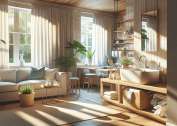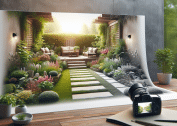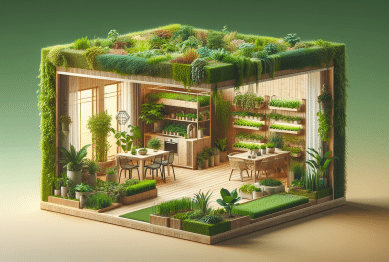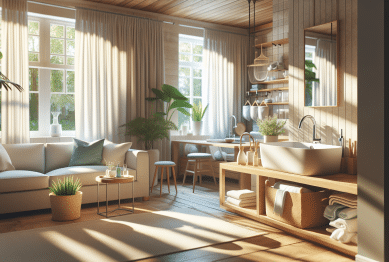Lighting does more than just brighten a room—it can dramatically shift the feel and functionality of your space. Whether you’re reading, working, cooking, or relaxing, the right lighting setup can make a notable difference in your day-to-day comfort. With current trends moving toward smarter, wellness-oriented, and highly customizable solutions, it’s worth exploring lighting to improve home comfort.
In this guide, we’ll explore the best types of lighting to instantly improve home comfort, with a practical look at what’s trending and what actually works in real living spaces.
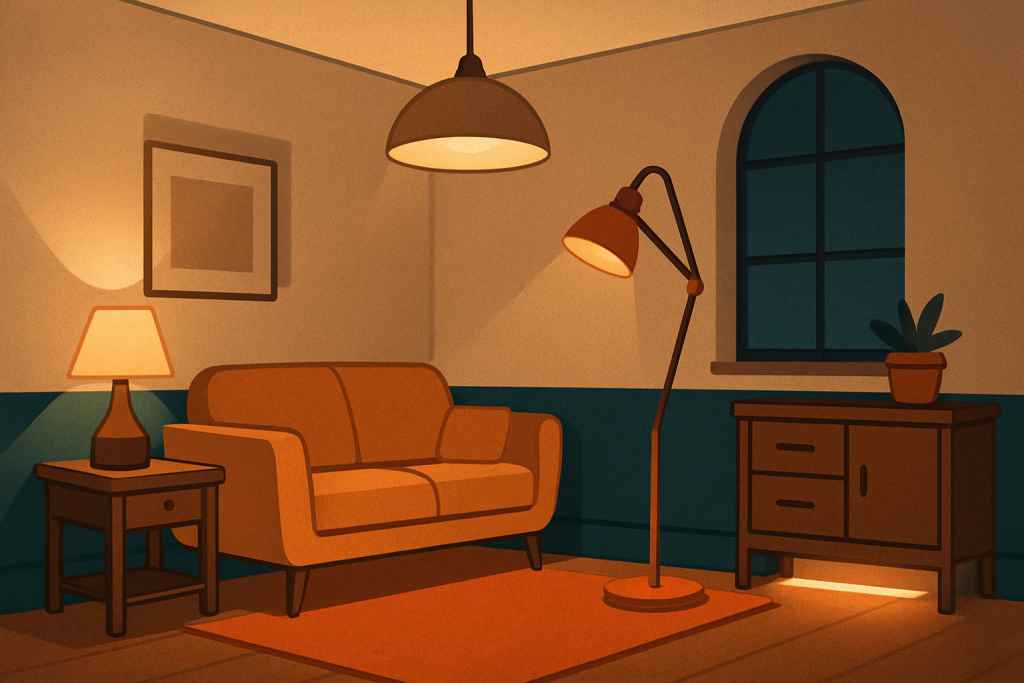
Why Lighting Matters for Comfort
Studies have shown that lighting directly impacts mood, focus, and even sleep quality. According to a 2022 review published in Building and Environment, natural and artificial lighting conditions influence emotional well-being and cognitive performance at home [1]. With remote work becoming more common, the demand for optimized home lighting setups has never been higher.
Key areas where lighting enhances comfort:
- Visual clarity – Easier on the eyes for reading, working, and general tasks.
- Ambience – Helps set the tone for relaxation or stimulation depending on the time of day.
- Health – Proper circadian lighting supports sleep and energy levels.
1. Layered Lighting: A Functional Must-Have
One of the most effective strategies for home comfort is using layered lighting, which combines three main types:
- Ambient lighting: General illumination (e.g., ceiling fixtures, recessed lights).
- Task lighting: Focused light for specific tasks (e.g., desk lamps, under-cabinet lights).
- Accent lighting: Decorative or mood-enhancing (e.g., wall sconces, LED strips).
Layering lets you customize brightness for various activities and times of day. Instead of relying solely on overhead fixtures, integrating multiple light sources adds flexibility and reduces strain on the eyes.
2. Smart Lighting Systems for Personalized Control
Smart lighting is gaining popularity because it adapts to individual routines and preferences. Systems like Philips Hue and LIFX allow users to:
- Adjust color temperature (warm vs. cool tones)
- Automate schedules based on the time of day
- Control lights via app, voice, or motion sensors
These features contribute to comfort by aligning lighting with circadian rhythms and lifestyle habits.
A 2023 survey by Statista found that 48% of homeowners using smart lights reported improved mood and sleep quality, citing easier control and environmental adaptation [2].
3. Warm White LED Bulbs for a Cozy Atmosphere
Cool white light often feels harsh and clinical, while warm white LEDs (2700K–3000K) offer a softer, more comfortable glow that’s ideal for living rooms, bedrooms, and dining spaces.
LEDs are not only energy-efficient, but newer models also come with dimmable functions and improved color rendering that mimics natural daylight more accurately than older fluorescents.
Benefits of warm white LEDs:
- Reduced eye strain
- Inviting tone for evenings
- Consistent brightness without flickering
4. Natural Light Enhancements
Maximizing daylight is one of the most sustainable ways to improve comfort. Simple upgrades like sheer curtains, mirror placement, or light-colored walls can reflect natural light deeper into the room.
For rooms with limited daylight, daylight-simulating lamps (such as full-spectrum LEDs) can supplement brightness without creating artificial harshness.
The U.S. Department of Energy highlights that homes optimized for natural lighting not only reduce electricity use but also promote mental well-being and concentration [3].
5. Dimmable Fixtures for Dynamic Atmosphere
Dimmers give you the ability to change lighting intensity throughout the day. Brighter settings are great for productivity, while lower levels foster calm and rest.
Ideal locations for dimmable lighting:
- Bedrooms (especially near bedside)
- Bathrooms (for late-night trips)
- Living rooms (to transition from day to evening)
Many modern dimmers are compatible with both LED and smart systems, making them a flexible option for any setup.
6. Under-Cabinet and Toe-Kick Lighting in Kitchens
Functional yet often overlooked, these targeted lighting zones enhance both visibility and ambiance in kitchens and bathrooms. They provide subtle illumination for early mornings or late nights without the need to turn on bright overhead lights.
Why they matter:
- Prevent harsh glare at night
- Add visual depth to kitchen design
- Improve safety and navigation in dark hours
7. Color-Tunable Lighting for Mood Management
A growing trend in wellness-oriented design, color-tunable lights let you shift the hue of your space—from energizing cool light to relaxing amber tones.
This customization can influence mood and biological rhythms. For instance, cooler blue tones are ideal for concentration, while amber tones help prepare the body for sleep.
These types of lights are often found in:
- Smart bulbs
- High-end floor lamps
- LED panels and light strips
8. Bedroom Lighting for Sleep Optimization
To create a truly restful environment, bedroom lighting should minimize blue light exposure in the evening. Soft bedside lamps, red-toned night lights, or programmable smart bulbs can help signal the body to wind down.
Some modern smart lights even integrate with sleep tracking apps to adjust brightness based on user sleep patterns.
Ideal options for sleep-friendly bedroom lighting:
- Amber or red spectrum night lights
- Dimmable lamps
- Smart systems with sleep/wake automation
9. Motion-Activated Lighting for Convenience and Safety
Installing motion sensors in hallways, closets, or bathrooms eliminates the need for switches—ideal for night-time use or for kids and older adults.
This not only enhances comfort but also improves safety by reducing the chances of tripping in the dark.
Final Tips for Implementing Home Lighting Upgrades
When planning to improve home comfort through lighting, consider these practical tips:
- Choose light sources based on room function
- Incorporate smart features for convenience
- Use warm tones for relaxation zones and cooler tones for workspaces
- Balance natural and artificial lighting
- Invest in dimmable and color-adjustable options for flexibility
References
- Building and Environment, 2022. “Effects of indoor lighting on health and well-being.”
- Statista, 2023. “User satisfaction with smart home lighting.”
- U.S. Department of Energy. “Daylighting and windows in energy-efficient homes.” Retrieved from https://www.energy.gov



